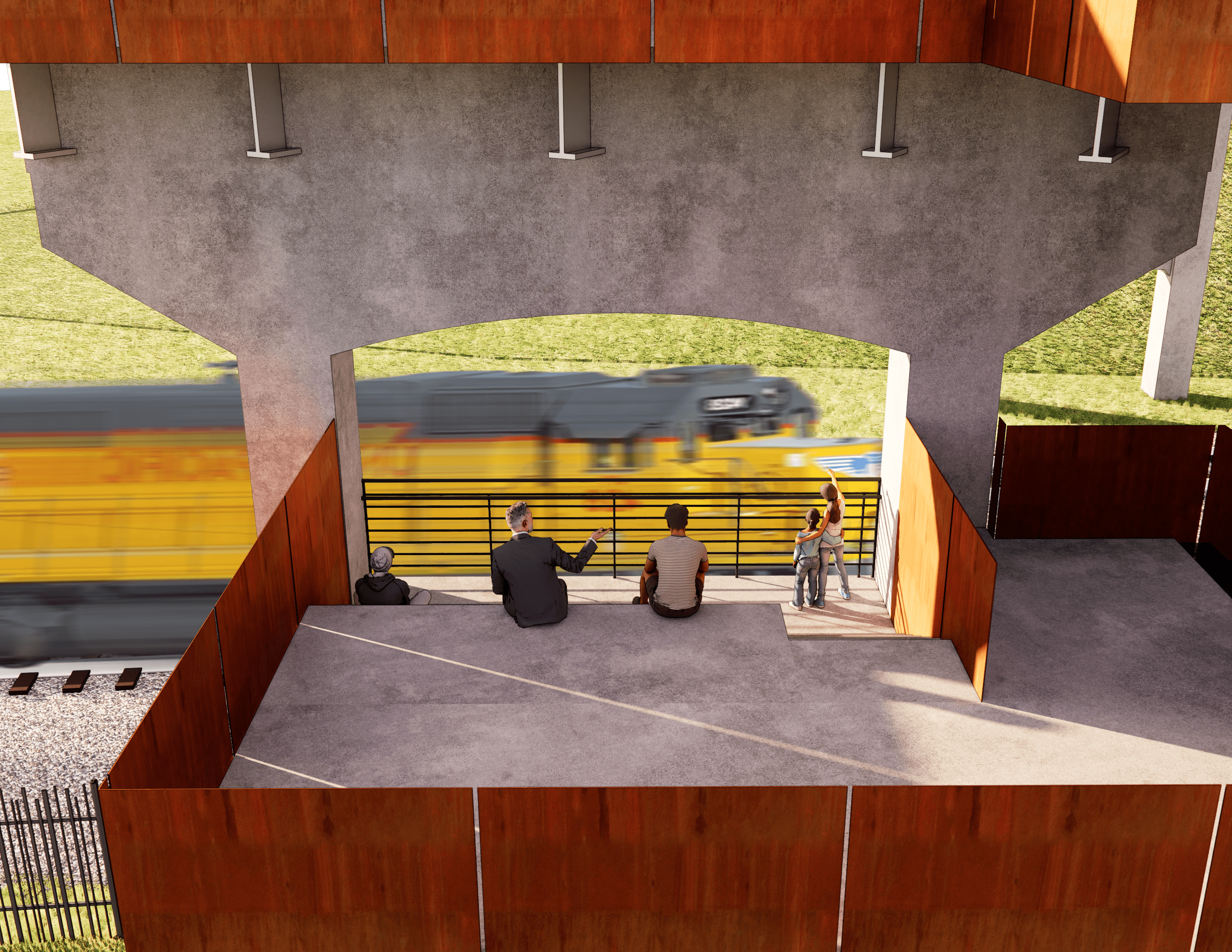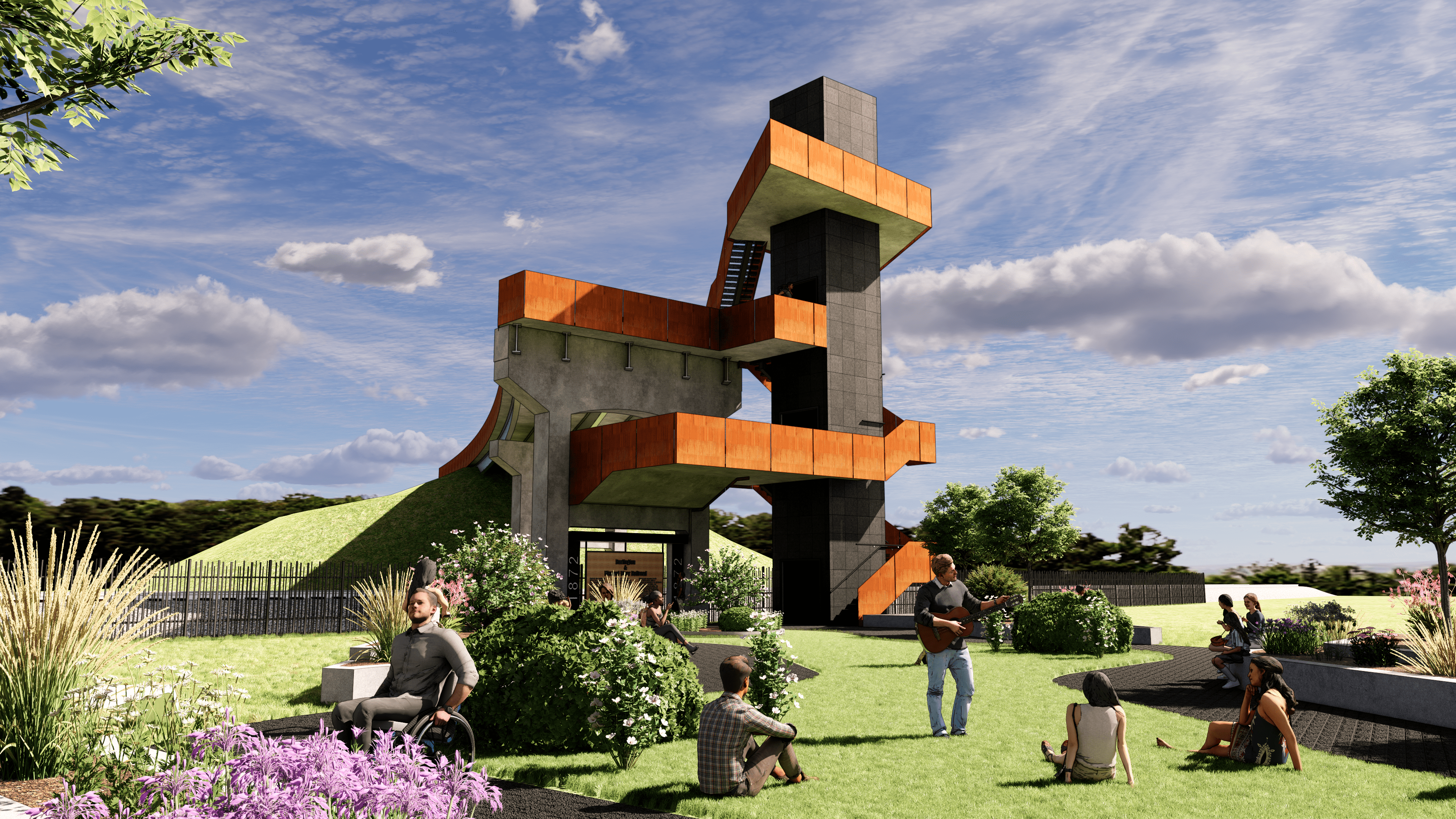
Location: Hastings, Nebraska
Client: Withheld
Year Designed: 2022
Year Completed: Unbuilt
Renovation Cost: N/A
Size: N/A
Program: Convert partially demolished viaduct into public amenity
Architect: Goodlife Architecture
In 1936, a public works project was completed in the sleepy train town of Hastings, Nebraska. Although it wouldn’t be mistaken for the Brooklyn Bridge, the concrete piers of the new Highway 281 viaduct had a subtle elegance to their form and allowed vehicles to soar over one of the nation’s busiest railroads when entering town. Eighty-five years later the highway had been moved, and the once-great crossing had not been maintained – to the point that City officials decided to have it demolished.
But many locals still utilized the viaduct as a local connector – and as a key (unofficial) component of the recreational trail system. So, when a remaining section of bridgework sat in extended purgatory while awaiting demolition permissions from the railroad authorities, a small group of citizens asked Goodlife to reimagine the ruin as a public amenity.


In our solution, separate paths for pedestrians and cyclists follow the viaduct’s curved approach up to the crossing, terminating in an infinity edge and a vertical tower. Ascending, one is treated to a long view of the vast prairie horizon – a special treat at sunrise and sunset. Providing a visual connection between the bridge and the tracks, a lower-deck observation platform offers a moment of respite for joggers and serves as a trainspotting destination for a surprising number of enthusiasts – local and tourist.
At the tower’s base, travelers interpret the enormity of the diesel engines from a short distance below the track at grade and are free to continue their trek into the town center via a native-planted nature path, tracing the line of the formerly overhead bridge to a 5-point intersection of the City’s municipal trail system. Sadly (but expectedly), the project was never to be considered. The necessary permissions were obtained, and the remaining sections of the historic viaduct were removed to little fanfare.

